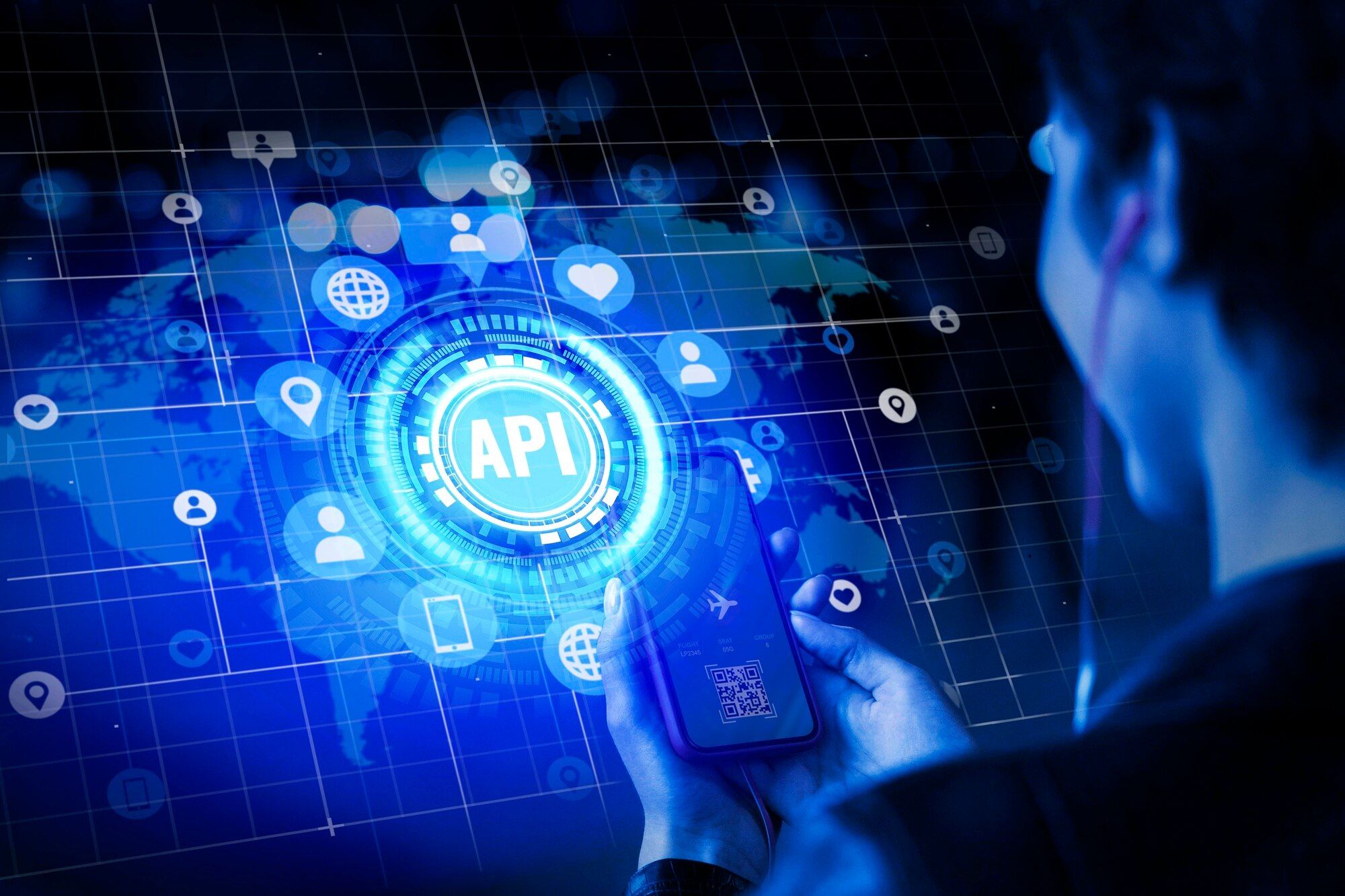In the dynamic universe of e-commerce, Application Programming Interfaces (APIs) have emerged as the backbone of digital commerce, allowing businesses to offer their customers seamless and integrated shopping experiences. As a seasoned API development expert, I aim to demystify the complexities and highlight the latest trends, challenges, and solutions in web and e-commerce development through a professional lens.
This article is meticulously crafted to enlighten e-commerce businesses on the pivotal role of APIs and how to leverage them for a competitive edge. By harnessing the power of APIs, companies can enhance their customers' experience and gain an edge over their competitors.
What is an API?
 An API acts as a messenger that takes requests, tells a system what you want to do, and then returns the system's response back to you. Imagine asking a waiter (API) for a menu (data) in a restaurant (system); the waiter brings the menu, you choose your meal, and the waiter instructs the kitchen (system) of your choice. The kitchen prepares the meal, and the waiter delivers it back to you. In this analogy, the API facilitates your request to the system and delivers the response back to you.
An API acts as a messenger that takes requests, tells a system what you want to do, and then returns the system's response back to you. Imagine asking a waiter (API) for a menu (data) in a restaurant (system); the waiter brings the menu, you choose your meal, and the waiter instructs the kitchen (system) of your choice. The kitchen prepares the meal, and the waiter delivers it back to you. In this analogy, the API facilitates your request to the system and delivers the response back to you.
API stands for "Application Programming Interface." At its core, an API is a set of rules, protocols, and tools for building software and applications. It allows different software applications to communicate with each other, enabling functionalities to be shared and used in a flexible, efficient manner. For e-commerce, APIs facilitate interactions between various online retail systems and external applications, enhancing customer experience and operational efficiency.
How Does API Work in Web and Mobile Development?
In web development, APIs play a crucial role in enabling different software applications to interact with each other over the internet. For example, when you log into a service using your Facebook or Google account, the website uses APIs to authenticate your identity without sharing your login details.
In mobile development, APIs are used to connect the app with external services and databases. This is crucial for functions like fetching weather updates, integrating payment gateways, or social media logins.
API Design & Development: Best Languages
When it comes to API development, languages like PHP, Python, and Java are commonly used due to their robust libraries and frameworks that simplify the process.
- PHP: With frameworks like Laravel and Symfony, PHP is great for building RESTful APIs quickly.
- Python: Known for its simplicity, Python uses frameworks like Django and Flask for API development, making it ideal for both REST and GraphQL APIs.
- Java: Its widespread use, especially in enterprise environments, makes Java a solid choice for building scalable APIs with frameworks like Spring Boot.
API Security and Management
Security is paramount in API development. OAuth2 and JWT (JSON Web Tokens) are standard practices for securing APIs, ensuring that data transmission is encrypted and authenticated. API management tools like Kong, Apigee, and AWS API Gateway help developers monitor, throttle, and secure API access efficiently.
Guide to API Development: Tools and Services
Developing an API involves several steps, from planning and design to documentation and deployment. Tools like Swagger or Postman can assist in designing, testing, and documenting APIs. Cloud services such as AWS, Azure, and Google Cloud provide robust environments to deploy and manage APIs.
How to Build an API: An Example
Let's consider a simple example of building a RESTful API using Python and Flask:
- Setup: Install Flask using pip.
- Code: Write a simple API endpoint that returns a message.
from flask import Flask
app = Flask(__name__)
@app.route('/hello', methods=['GET'])
def hello_world():
return 'Hello, World!'
- Run: Start your Flask application.
- Test: Access your API endpoint through a browser or Postman.
Use Cases Where API is Used
- Single Database for Multiple Platforms: Use APIs to allow your website and mobile app to share the same database, ensuring data consistency across platforms.
- E-commerce Integration: APIs can connect an e-commerce platform with third-party systems like payment gateways, CRM, or inventory management systems, streamlining operations.
- Automation Workflows: Automate repetitive tasks by connecting different applications via APIs, improving efficiency.
- Headless CMSs and E-commerce: APIs enable the separation of backend systems from frontend presentation layers, allowing for more flexible content and e-commerce platform management.
- OpenAI Integration: Use APIs to integrate advanced AI models into applications, enhancing capabilities with natural language processing, image recognition, and more.
Conclusion: The Future is API-Driven
The possibilities with APIs are endless, and as technology advances, their role will only become more integral to software development. Whether you're a business owner looking to streamline operations or a developer eager to build the next big app, understanding and utilizing APIs is key.
Remember, the journey to mastering API development starts with the first step. What project will you enhance or create using APIs?
This introduction to APIs is just the tip of the iceberg. The digital world thrives on connectivity, and APIs are the threads that weave this intricate tapestry. By embracing API development, you're not just building applications; you're crafting the future of digital interaction.
